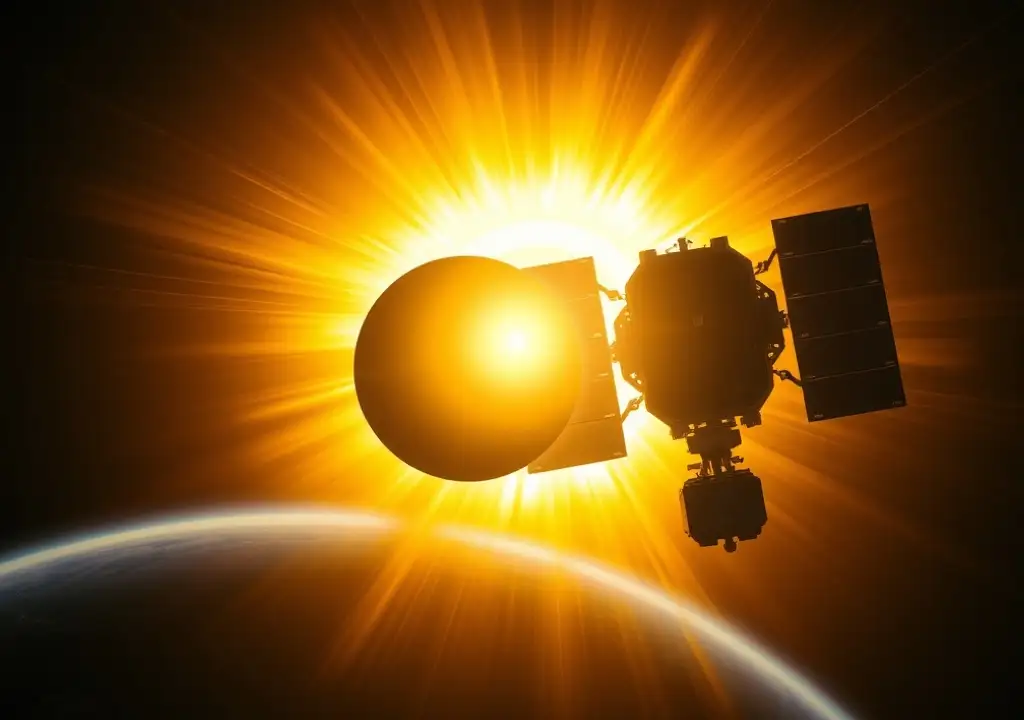The European Space Agency (ESA) has launched the Proba-3 mission to create the first artificial solar eclipse in space, aiming to explore the sun’s outermost atmosphere — the corona.
When we witness a solar eclipse, it usually involves the moon crossing between the Earth and the sun, briefly obscuring sunlight. This rare alignment is known as syzygy (pronounced siz-uh-jee). However, on December 5, ESA launched two satellites that will simulate this natural phenomenon in space, not with the moon but with cutting-edge satellite coordination.
The goal of the Proba-3 (Project for On-Board Autonomy) mission is twofold: to test the new technology of precise formation flying (PFF) and to allow scientists to study the sun’s corona, a mysterious region that still puzzles experts. “This part of the sun is not well understood,” explained Ester Bastida, Proba-3 systems engineer. One long-standing mystery is why the corona is much hotter than the sun’s surface.
While the sun’s surface has a temperature of about 5,500 degrees Celsius (9,932°F), the corona reaches blistering temperatures of 1–3 million degrees Celsius (1.8–5.4 million°F). Solar flares from this outer layer can travel the full 150 million kilometres (93 million miles) from the sun to Earth.
How Proba-3 Will Simulate an Eclipse
The Proba-3 mission took off from the Satish Dhawan Space Centre in India, using ISRO’s PSLV-C59 rocket. Once in space, two spacecraft — the Coronagraph Spacecraft (CSC) and the Occulter Spacecraft (OSC) — will separate and align themselves 150 metres (492 feet) apart. The OSC carries a 140cm (55-inch) disk to cast a precise shadow onto the CSC, effectively blocking the sun’s direct rays to simulate a solar eclipse.
This setup relies on exact positioning, requiring millimetre-scale precision using formation flying technology. If successful, it will allow scientists to observe the sun’s corona for up to six hours during each 19-hour and 36-minute orbit — a major advancement over fleeting total eclipses visible from Earth.
Mission Goals and Scientific Aims
The Proba-3’s first aim is to demonstrate the feasibility of PFF, which uses a combination of GPS and satellite communication to maintain exact spacing. The satellites will operate at distances ranging from 25 to 250 meters (82–820 feet) while staying in perfect alignment.
The second aim is to study the corona using specialized onboard instruments, including a coronagraph — a device that blocks out the sun’s central light, allowing researchers to view fainter outer layers. This particular coronagraph is named ASPICCS (Association of Spacecraft for Polarimetric and Imaging Investigation of the Corona of the Sun). It replicates total eclipse viewing conditions while eliminating atmospheric interference, making it possible to collect much clearer data.
Why the Proba-3 Mission Matters
The sun’s corona is usually hidden due to its faint glow compared to the sun’s surface, and it’s only visible during rare total eclipses — which occur roughly once every 375 years at any specific point on Earth and last only minutes.
By studying the corona in detail, scientists can better predict solar weather events and extreme geomagnetic storms. Such events can significantly affect satellites, GPS networks, and even power systems on Earth.
If Proba-3 succeeds, it could revolutionize solar observation by giving researchers regular access to long-duration views of the corona, without having to wait for natural eclipses.

